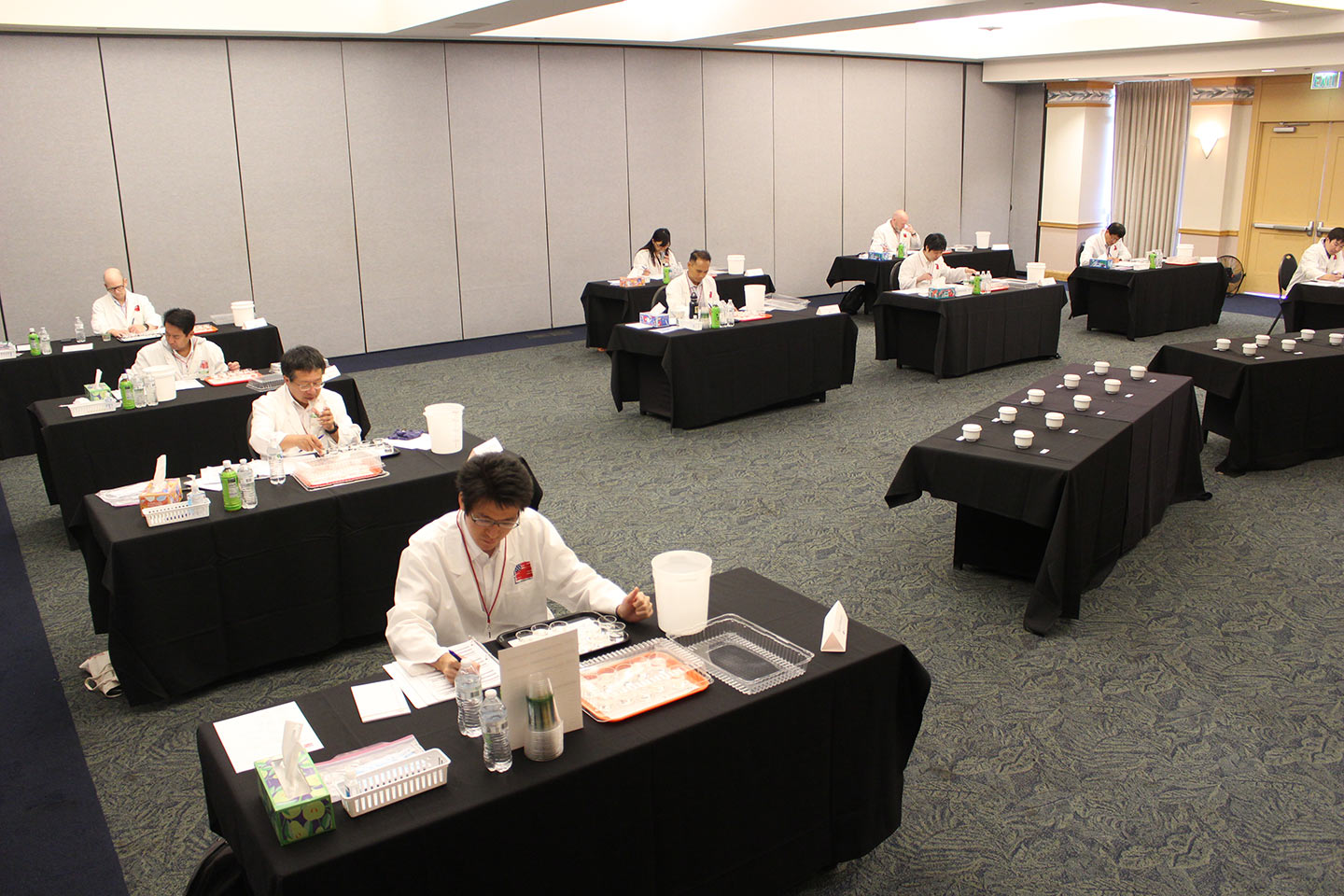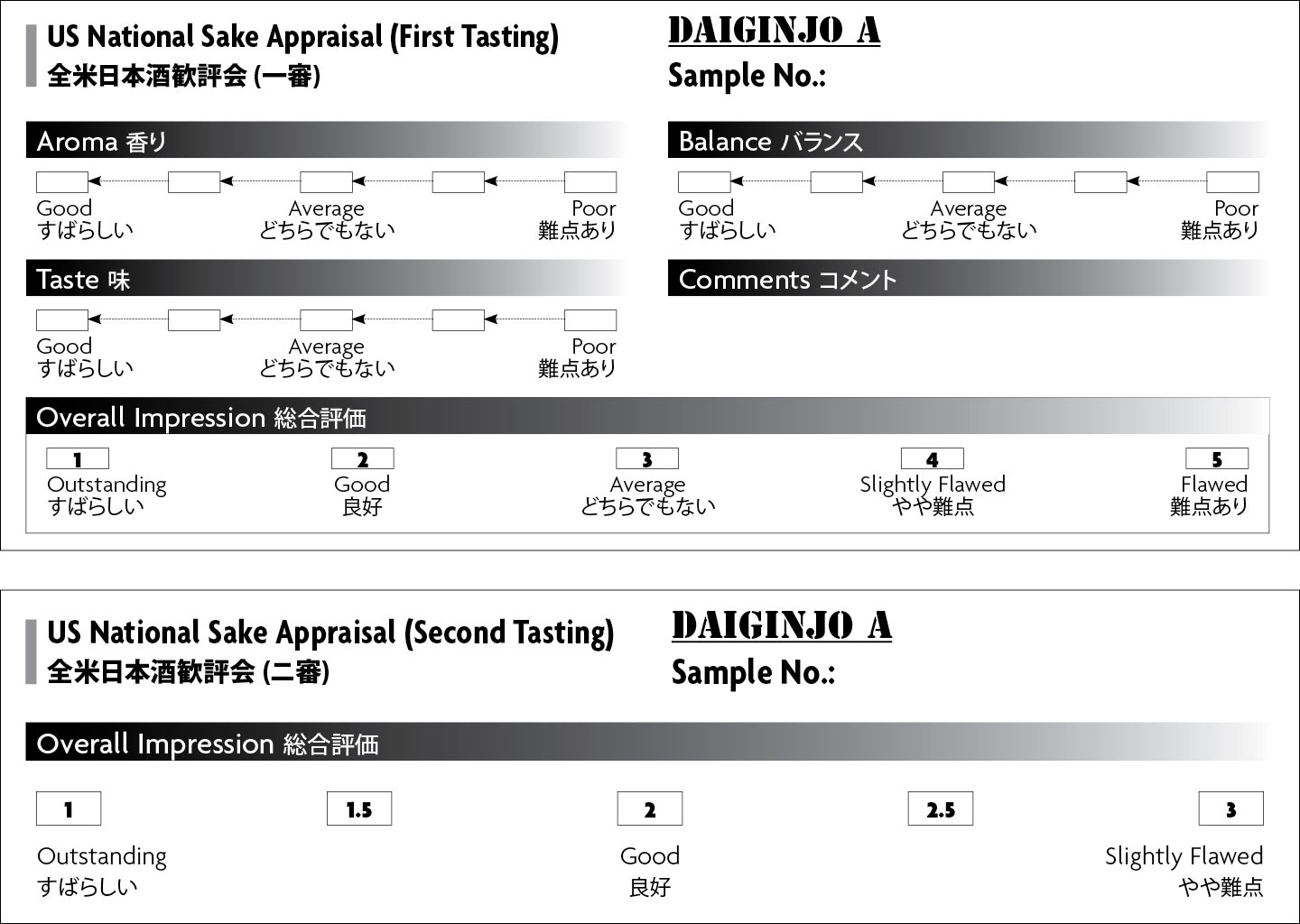Judging Criteria


Fairness,
Transparency,
Authenticity
Entries to the U.S. National Sake Appraisal are evaluated in a blind tasting over three days with eleven participating judges, usually eight from Japan and three from the U.S. There are two sessions: the isshin, or first tasting, in which all entries are tasted, and the nishin, or second tasting of entries in the top 50th percentile of the isshin tasting. Gold and silver awards are determined by ranking in the nisshin session.
Entries are judged based on four criteria: aroma, taste, balance and overall impression. Aroma figures strongly in the judging of ginjo and daiginjo labels but is less of a factor with junmai entries. When evaluating the taste, judges also take into account body and texture. With balance, entries are viewed favorably when aroma is perfectly integrated with flavor and the sake possesses an overall harmony.
Taking into account a sake’s aroma, taste and balance, judges then mark the overall impression as (1) outstanding, (2) good, (3) average, (4) slightly flawed or (5) distinctly flawed. Results are tabulated using an Excel spreadsheet, with approximately 50% of the entries qualifying for the second tasting.
• The tasting is conducted entirely blind. At no time prior or during the Appraisal do the judges come into sight or contact with the bottle, cap or label.
• Each entry is measured for glucose density prior to the Appraisal. Entries are divided into three or four groups, from low to high glucose density, with the judges tasting by group. This facilitates a fairer tasting, as low-glucose entries are not overpowered by a high-glucose entry tasted previously.
• Each judge samples every entry and his or her score is individually entered in an Excel spreadsheet. Communication between judges during the judging is not allowed, eliminating any possibility of outside influence.
